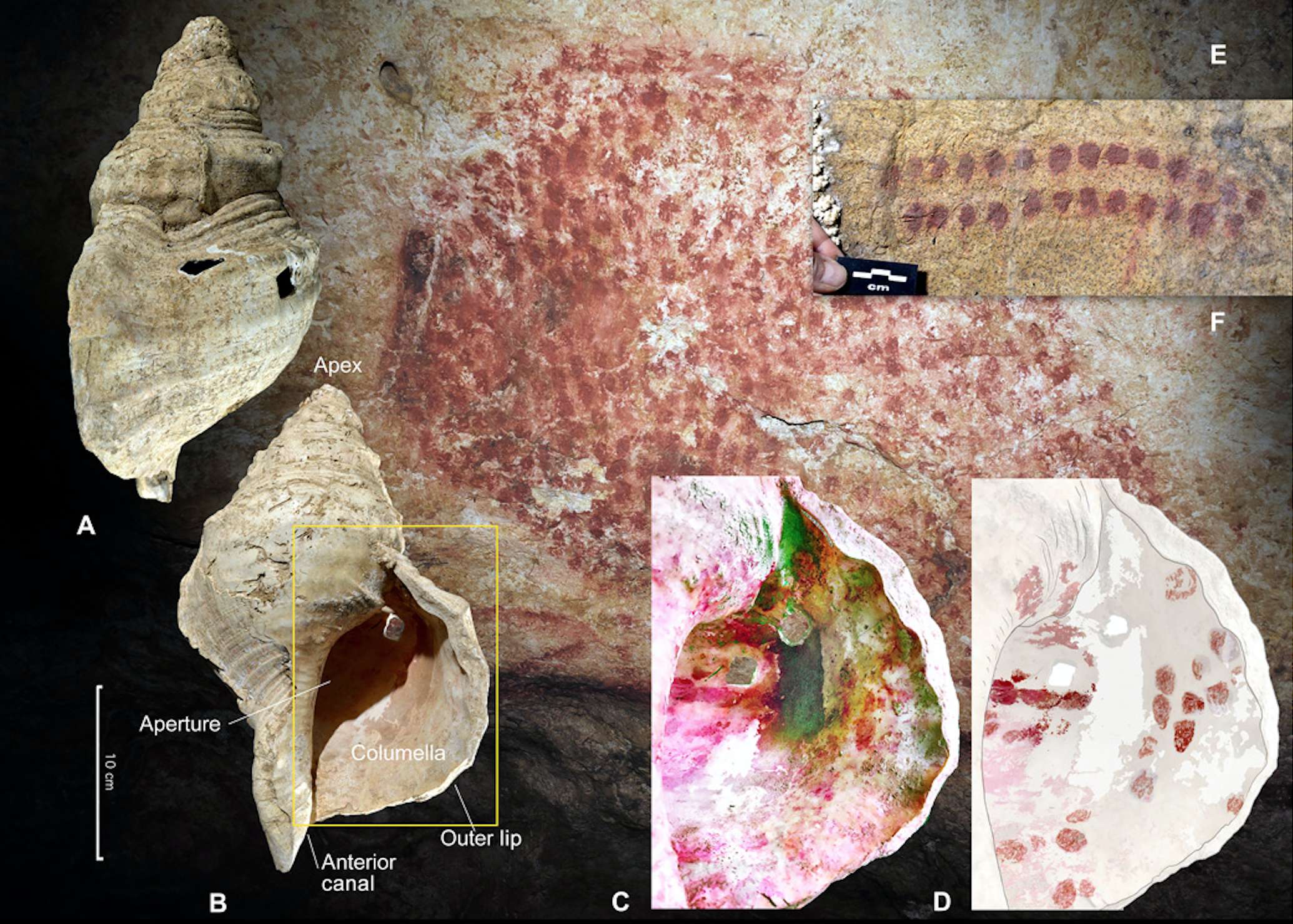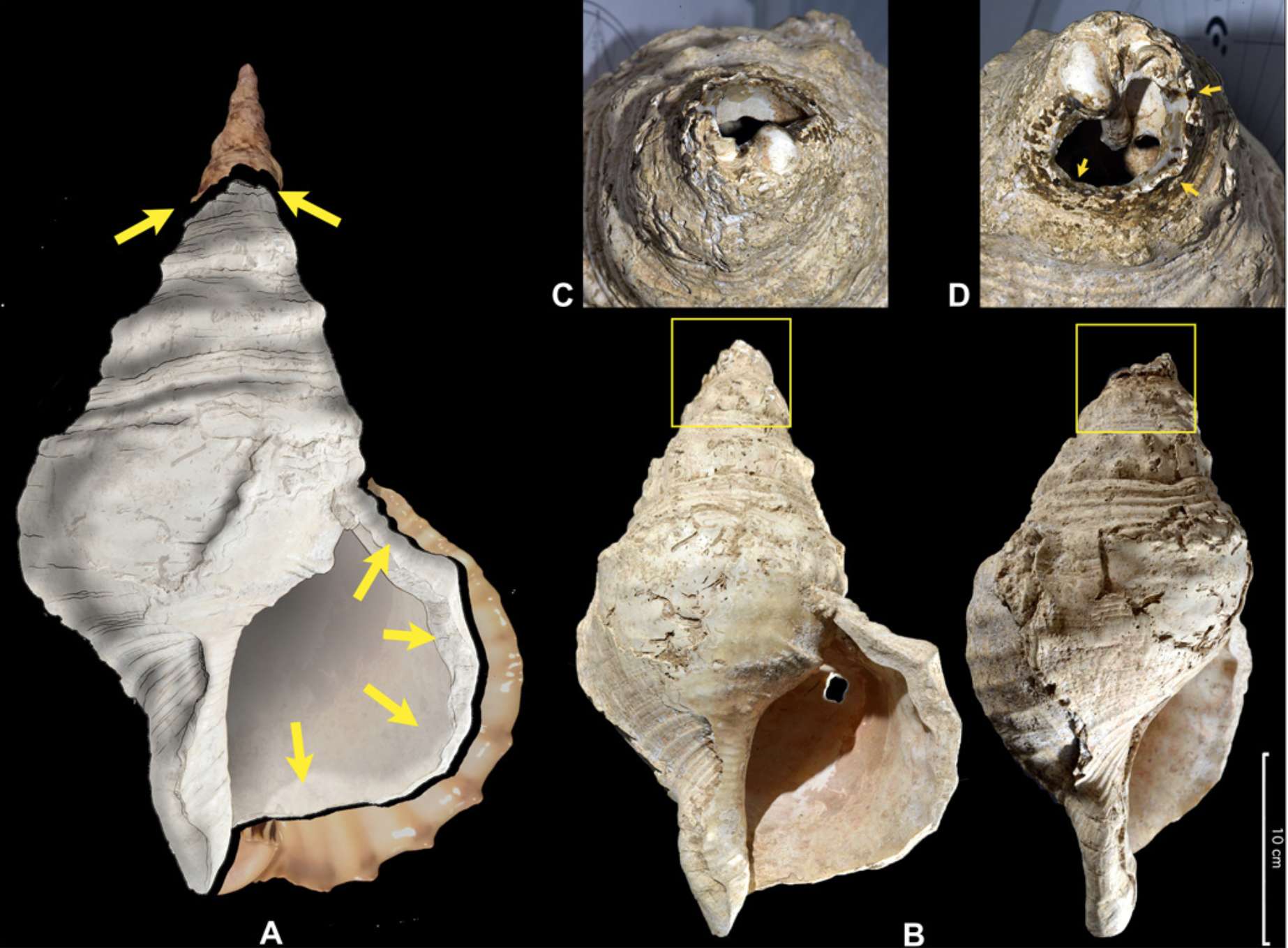Create a free profile to get unlimited access to exclusive videos, sweepstakes, and more!
Listen to the sweet sounds of the first prehistoric seashell horn ever found

Acting as a warning siren, a musical wind instrument, or perhaps even to let your tribe know dinner's on the table, ancient shore-dwelling cultures used conch shells as aural tools for a variety of reasons long before the advent of more modern means of communication.
In a rare find for researchers, the first-ever seashell used as a Paleolithic music horn has been identified after being forgotten for nearly 90 years following its discovery at the entrance to a cave in the French Pyrenees in 1931 by H. Bégouën and J. T. Russell. The object was then described as having no trace of human intervention and was ultimately interpreted as a “loving cup.”
Dating back approximately 18,000 years, Ancient Europeans crafted this instrument from a large seashell and produced musical notes out of it that we can now hear for the first time in the Soundcloud clip below.
Recordings of this ancient conch shell transformed into a horn provide a time capsule into what sounds it was able to emit, tones that turned out to be in close proximity to the musical notes C, D and C sharp. These sonorous notes were extracted by a musicologist recruited by the researchers, who used a modern metal mouthpiece and blew into the shell’s customized opening.
“I needed a lot of air to maintain the sound,” said Jean-Michel Court, who performed the demonstration.
According to a new open-access study published last week in Science Advances, the remarkable shell is a large specimen of C. lampas, a mollusk heralding from the North-East Atlantic and the North Sea. Today, it can be found in Ireland and France (Brittany, Pas-de-Calais) at its northern borders. Although rare, it still lives in the Bay of Biscay and Basque and Asturian coasts of Spain.
This sea creature makes its home in rocky bottoms, often interspersed with sandy stretches up to 200 feet deep. While it’s not yet understood exactly how prehistoric European people used this shell horn, similar conch shells in historical and modern cultures have often been employed as musical instruments, as well as calling devices, and revered as ritualistic objects.
"People played the marine horn inside Marsoulas Cave, located in the French Pyrenees," explained University of Toulouse archaeologist Carole Fritz and her colleagues. "Wall paintings inside that cave depict humans, animals and geometric forms. Discoverers of the conch shell at the cave’s entrance in 1931 thought it had been used as a shared drinking container."
As further noted in their paper, this previously unidentified musical instrument had been recovered from the collection of the Natural History Museum of Toulouse. The seashell horn was originally unearthed in the cave of Marsoulas (Haute-Garonne, France) in the Pyrenean foothills. Marsoulas was the first decorated cave to be found in this area back in 1897 and has been a source of constant scholarly interest from the end of the 19th century until today.
Upon re-examining the shell using microscopic and imaging techniques, scientists found evidence that someone had cut off the shell’s narrower end to create a funnelled opening. A cylindrical mouthpiece, perhaps fashioned out of a hollow bird bone, was likely placed in the hole.
Brownish traces of a type of resin or wax applied around the artificial opening might have originated from glue used to secure the mouthpiece. Images of the shell’s insides showed a pair of holes that had been carefully chipped into spiral layers underneath the opening.
Though not the oldest musical instruments in the world, those being the 40,000-year-old European bone and ivory flutes, this ultra-rare musical conch represents the oldest seashell horn ever found and remains a fascinating relic with which to better understand Paleolithic cultures.




























